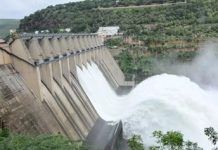With tensions rising on India’s borders in recent years, first with Pakistan in 2016, following the attack on an Army camp in Uri, and now with China in Doklam, the government is mulling a dedicated satellite bandwidth for the Border Security Force (BSF), Indo-Tibetan Border Police (ITBP) and Sashastra Seema Bal (SSB) for better border surveillance.
The idea is to enable the border guarding forces to monitor the movement of Pakistani and Chinese troops in real time, track terrorist infiltration, map terrain and communicate effectively in remote areas, besides assessing the strength of soldiers and artillery deployed by neighbours near the border in case of a stand-off. Sources in the government said that top bureaucrats in the home ministry recently held several rounds of meetings with BSF, ITBP, SSB and ISRO officials, during which it was discussed whether a single satellite would be enough to monitor activities on the borders or if each force needed to be provided a dedicated satellite.
It was felt that command, control, communication, surveillance, intelligence and reconnaissance abilities of border security forces — the first line of border defence — needed to be made impregnable, they said. The proposal is in the initial stages but sources said the government was serious about it.
An officer said, “Satellites can play an important role in border management, and India has some of the best ones in Asia. While defence forces already use space technology, border forces depend on intelligence shared by central agencies like IB, RAW and National Technical Research Organisation. They also face poor communication issues in areas like Ladakh, Sikkim, Arunachal Pradesh and Kashmir Valley. With satellite technology for real-time information, future incidents can be better dealt with.”








